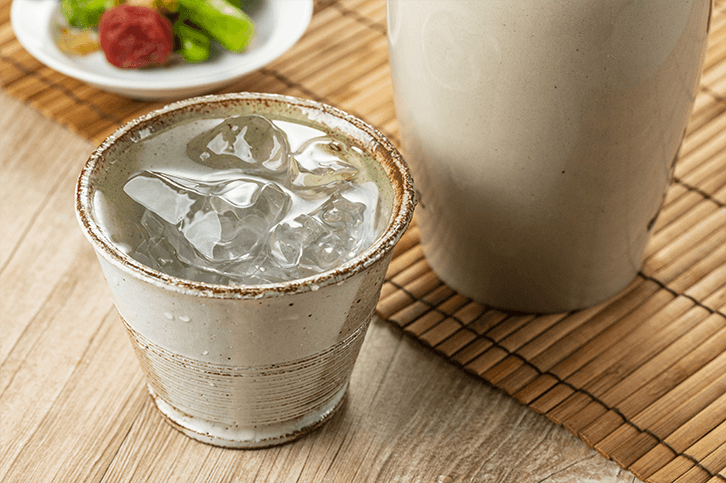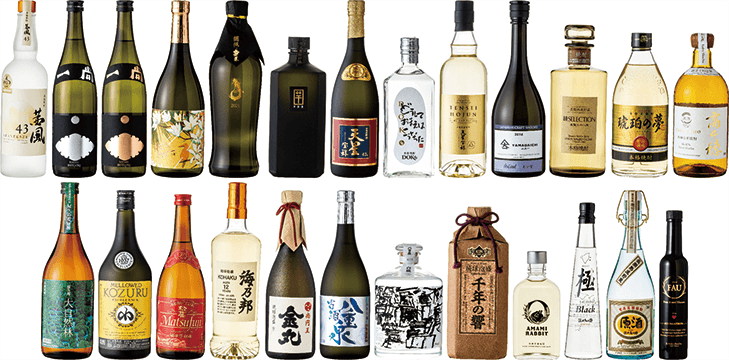
When most people think of Japanese alcohol, they think of the rice wine nihonshu, which is more commonly known as saké internationally. In recent years, Japan has also become famous for its production of high-quality whiskey and even gin that has grown popular in a number of Western countries. But there is one variety of alcohol that while popular in Japan, is not so well known by those abroad, despite being manufactured in various parts of the country for hundreds of years.
Made using a variety of different ingredients, typically those abundant in the area the alcohol is being produced, shochu has long held a special place in the heart of Japan’s alcohol market, particularly for its availability during tumultuous times in the country’s history. Exploring how this unique drink came to be and the events that ultimately popularized it, this is the story of shochu, Japan’s lesser-known liquor.
-
01
International Influence
While perhaps not as old as its more famous sibling, nihonshu, there are records that make mention of shochu dating all the way back to 15th century Japan. Interestingly, the earliest written documentation of the word shochu was actually a piece of graffiti carved into one of the rafters of a shrine in Kagoshima. The graffiti, believed to have been left behind in 1559 during the shrine’s construction, was found during renovations in the mid-90s and was the written complaint of the carpenter involved in the construction. In his message, the carpenter claimed that the shrine’s head priest was cheap for not offering them shochu while working on the shrine.
At this point in time, the shochu the carpenter was referring to would more than likely have been made similarly to nihonshu by using rice. A recipe that would change in later years through the introduction of the humble sweet potato in the 17th century, which arrived in Okinawa after having traveled from South America and then being traded through China. Following this, sweet potato was introduced via boat to mainland Japan and quickly became popular amongst farmers as it would flourish in regions where the climate and terrain had historically made it difficult to grow rice.![Due to difficulties associated with growing rice in some parts of Japan, sweet potato became a popular alternative base for brewing shochu.]()
Due to difficulties associated with growing rice in some parts of Japan, sweet potato became a popular alternative base for brewing shochu.
Throughout the following centuries, the shochu manufacturing process went through a number of changes as other ingredients, primarily the now abundant sweet potato, were incorporated into the recipe in an effort by brewers to set themselves apart from other shochu producers. These ingredients also included various grains, buckwheat, sugar cane and even chestnuts.
![Over the years, breweries have refined and personalized their processes to create their own unique brand of shochu.
© P.K.N]()
Over the years, breweries have refined and personalized their processes to create their own unique brand of shochu. © P.K.N
During the 1900s, shochu’s popularity continued to soar with multiple instances of rice shortages across Japan, particularly after the end of World War Two, when food in general had become a scarcity. These rice shortages made the production and purchase of nihonshu extremely expensive, leaving a gap in the market that was quickly taken up by shochu, which continued to rely upon the more readily available sweet potato as its core ingredient. A turn of events that while economically unfortunate for the country, allowed shochu to cement itself as a staple Japanese alcohol.
-
02
The Shochu of Today
Throughout the decades since and as the production of rice has been stabilized across Japan, nihonshu has once again risen towards the top of the Japanese alcohol landscape. But that’s not to say that shochu is no longer popular. In fact, shochu remains the third most sold and consumed variety of alcohol in Japan, trailing only behind nihonshu and beer.
![Still holding a strong position in the market after hundreds of years, the variety of shochu available in Japan today is vast.]()
Still holding a strong position in the market after hundreds of years, the variety of shochu available in Japan today is vast.
In terms of strength, modern day shochu is one of the more potent and dynamic liquors on the market. With an alcohol content typically in the range of 20-40%, shochu can be served in a variety of different ways such as with fruit juice, oolong tea or simply with some water and ice depending on your tastes.
Of the varieties available, the most common form of shochu is still that with a sweet potato base, known in Japanese as imo shochu. This is followed by barley and buckwheat-based varieties, which each present their own unique flavour profiles and strength depending on the brewing process and how many times they are distilled. While brewed in a number of locations across Japan, most of today’s shochu is produced in the southwesterly region of Kyushu, which is home to more than 300 distilleries. Dedicated shochu bars have also become popular across Japan and serve as a great entry point, allowing guests to try a variety of different shochu without committing to the entire bottle.![Serving as the base for homemade fruit liquor, shochu is often used to make plum wine, also known as umeshu.]()
Serving as the base for homemade fruit liquor, shochu is often used to make plum wine, also known as umeshu.
Further highlighting the drink’s versatility, plain white shochu has also become popular as the base for homemade fruit liquors, such as the ever-popular umeshu. Often found in grocery stores during summer, this shochu can be combined with rock sugar and seasonal fruits to create a thick alcohol that pairs well with sparkling water.
So whether you’re new to the world of Japanese alcohol, or simply keen to try a drink with deep historical ties to the country it comes from, shochu is a great place to start.










